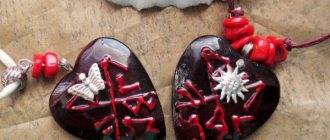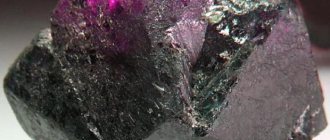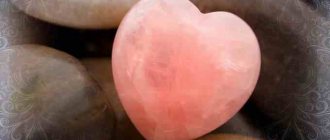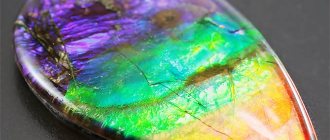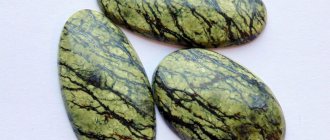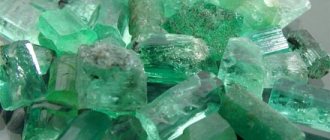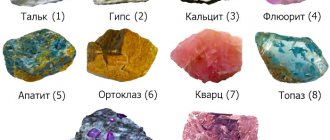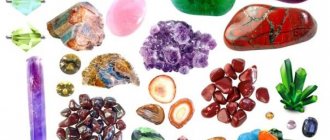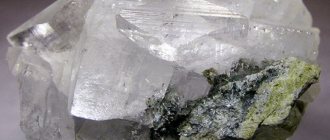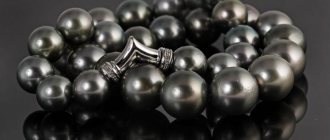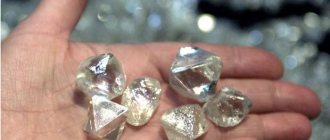Ural gems evoke admiration among the common man and the specialist. Impressive in variety, shape, quantity and quality. The Urals are the richest source of mineral deposits. Local finds often acquired their own names. While the rest of the stones remained unnoticed. Find out in more detail how large the area of the birth of jewelry is, how the extraction of treasures developed here and separately about some of them.
Geographical location of gems
The territory where the sources of jewelry materials are located is called the Gem Strip of the Urals.
This is not a specific place, but an association of deposits. They are scattered over many kilometers. In the Middle Urals near the rivers Rezh, Neiva, Adui.
On the map, this strip will look like a thin ribbon stretching over 100 kilometers. At the same time, there are areas where there are no sources of precious stones.
The variety is amazing. Apart from Afghan Badakhshan, such large deposits of jewelry have not been discovered anywhere. There are tourmalines, rock crystal, beryl and other minerals.
A few diamonds were found, but no significant deposits. The most competitive are 5 stones:
- emerald;
- alexandrite;
- amethyst;
- demantoid;
- topaz.
Each of these treasures is located in a certain part of the Urals. The mountains, formed during the Paleozoic era, became home to gems. They were formed in the process of geodetic changes.
Field
The first valuable minerals in the Ural Mountains region were mined and processed by local artisans. Mentions of the search for precious stones have been found at least since the 18th century. Later, industrialists, as well as jewelers trained according to European standards, became involved in the process.
In world mineralogy, even such a concept as the “gem strip of the Urals” has appeared. This is a huge territory, about 100 km long, stretching east of the Ural Mountains from south to north.
The peculiarity of local production is not only its gigantic volumes. Some minerals are found only here; such gems of the Urals even get their own names.
Some samples are inferior to the world's best specimens, others are considered standards. Deposits of famous valuable stones in the Urals are located in regions, for example:
- in the middle part of the region of mountain ranges there are large deposits of rhodonite;
- deposits of rubies, euclases, and topazes were found near the Kamenka River;
- in the south there are rich mines with noble zircon, aquamarine, and unique samples of jasper.
If we compare all regions of the world in terms of deposits and variety of minerals, perhaps Badakhshan in Afghanistan and our Murzinka will turn out to be the best. The latter represents a gigantic area stretching for 75 km, located near the village of the same name. Murzinka is part of a semi-precious belt, which also includes:
- Alabashka with its topazes and beryls;
- Mokrusha, known for aquamarine, black morion;
- deposits near Nizhny Tagil, where a lot of mica occurs.
Murzinka and other deposits
Murzinka can compete with Afghan Badashkhan in terms of the purity of minerals and their diversity. But mineralogists began to pay attention to it only in the first half of the 20th century. Descriptions of the area appeared. The deposits are not located so much in the populated area, although this is where it all began.
Besides this famous source of treasure, there are others. Vatiha, for example, is famous for its garnet and amethyst deposits.
In Alabashka, beryl, topaz, and smoky quartz are the main things found in the mines.
Mokrusha, along with other deposits of Ural stones, boasts rich deposits of aquamarine, black morion and lepidolite.
The emerald mines made the Malyshevsky (Mariinsky) mine famous. It was there that a specimen was found, weighing 1011 grams.
Demantoid can also be called unique. It is found in the Karkodinsky mine.
Ural malachite was discovered at the Mednorudyansky and then Gumeshevsky mines.
Deposits and production
The Ural strip itself is a line connecting many mines. Its length does not exceed 100 km. Murzinka is considered the most famous place for mining Ural gems. There you can find deposits of beryl, amethyst, tourmaline, and ruby.
Previously, there were so many stones there that anyone could find a nugget with little effort. Even now, excursions are held in Murzinka, during which the most active tourists can become owners of gems.
The following deposits are also famous for their diversity of minerals:
- Vatiha;
- Mokrusha;
- Alabashka;
- Gumeshevsky;
- Karkodinsky;
- Mariinsky mine.
The Urals are famous for the exclusivity of their finds. At the end of the 18th century, a Shaitan overflow was found near the village of Oktyabrskoye. It was discovered by chance in a mine where an emerald vein was being mined.
At first, researchers mistook the mineral for alexandrite. Later it turned out that this gem is unknown to scientists, and its deposit is only in the Urals.
For a long time, there was no organized mass mining of stones in Russia. Some seekers independently found single gems. The first mine was organized by the Kuznetsov brothers. A century later, A.I. Rusin discovered a huge tourmaline vein. Thanks to this, seekers rushed to the Urals to mine gems.
Watch how an amateur finds stones in the Urals in the video blog:
Famous prospectors and their contribution to the development of mines
First finds
Until the end of the 20th century, permanent excavations were not organized. The minerals of the Urals were known, but only a few came to mine them.
Local residents from a village near the Adui River were the first to discover the deposits. Peasants initially used them for crafts and everyday life. Later, hunting was carried out in winter for food. When the harvest ended, they, armed with chisels and picks, made narrow passages in the mountains.
No one erected fortifications and mines without supports often collapsed. The survivors returned to the planting season and on their way out sold what they found to resellers.
Rubies, emeralds, sapphires and topazes, known throughout Russia, were mined spontaneously and seasonally.
Continuation
The Kuznetsov brothers in 1810 recognized tourmaline near their village, Shaitanka.
Later, in 1900, Rusin from the village of Lipovsky discovered a whole vein of tourmaline.
In 1800, M. Kozhevnikov discovered green gems - emeralds. Their quality left no hope of sale, but it aroused in other prospectors the desire to discover the vein. It was found by Yakov Kokovin near the Tokovaya River.
Zverev, a peasant from the village of Koltashi, became an expert in Ural minerals. Illiterate and unable to count money, he was looking for gems for the stars that became the decoration of the Kremlin.
1st order gems
Emerald
The bright green hue distinguishes emerald from its relative, beryl. The transparent and durable gem has been mined since 1831 until the present day. And its price is sometimes higher than the cost of diamonds.
Excellent specimens were discovered by prospectors in the Urals. At the Malyshevsky mine in 2012, they were able to find a gem weighing 637 grams.
You can learn more about the favorite stone of aristocrats from the article “Description of the emerald stone: origin, composition, types.”
Mariinsky
The stone, discovered in 2012 at the Mariinsky mine, strongly resembles alexandrite in its chemical structure. This is a new, not yet fully studied mineral. Presumably belongs to the chrysoberyl group.
A distinctive feature is that lighting does not affect the appearance of the gem. It always remains dark green. From diamonds, Mariinskite took the strength and refrangibility of light rays.
Ruby
The colored stones of the Urals boast the presence of rubies. They were among the first to be found. Although only a few occur in these deposits.
Ruby has all shades of red. This often determines the cost of the copy. They were known in Russia under the name “yakhont”.
Sapphire
A distant relative of ruby, sapphire is an aluminum oxide. It is distinguished by its blue color.
The stone also bore the name “yakhonta” and shares the glory of ruby. Thanks to them, the Ural deposit became known.
Description of the Ural stones
The largest number of gems is mined in the Urals. The deposits are scattered throughout the intermountain region. Researchers called this territory the semi-precious strip of the Urals.
About 100 km of mountain ranges contain mineral deposits. The variety of types, shapes, and colors amazes even experienced scientists. In the depths of rocky caves you can find both diamond deposits and semi-precious gems (jasper, serpentine, hematite).
Mining takes place in the Ural Mountains:
- precious stones (1–4 orders);
- jewelry and ornaments (rauchtopaz, malachite);
- ornamental minerals (rhodonite, jasper).
It is difficult to compile a complete list of gems that are mined in the Urals. In addition to mineral mines, in the depths of the mountains there are accumulations of valuable metals and other minerals.
Watch a video review about gems:
1st order stones
First order stones are considered the most expensive.
They are characterized by:
- transparency;
- shine;
- strength;
- wear resistance;
- the ability to refract and scatter light.
The first class includes:
- Diamond is the hardest mineral. The ability to refract light rays after cutting has made the gem famous in jewelry. Colorless or whitish diamonds are more common, and black, blue, yellowish, pink, and gray stones are less common. Ural diamonds are considered to be of the highest quality. Their price is 3-4 times higher than the standard one. Despite this, sparkling crystals are popular among jewelers and collectors.
- The emerald became the symbol of the Urals. The gems mined here are distinguished by their rich green color and transparency. The gem acquired such qualities due to its high content of iron and chromium. Despite the fact that emerald is a fragile stone, its use in jewelry is widespread. The bright color and unique texture have found many fans both among amateurs and among true mineral experts.
- Ruby is a gem consisting of compounds of aluminum and oxygen. The chemical structure determines the mineral’s strength, shine and bright colors. The color of ruby can be either pale pink or deep scarlet. Most samples are raspberry in color.
- Sapphire, like ruby, is a carborundum. The blue color of the Ural gem is due to the content of titanium and iron. In addition to blue, the crystal can be colored orange, yellow, red, pink. The physical properties of sapphire and ruby are identical.
- Mariinskite was discovered by Ural scientists in 2011. The mineral is believed to be similar to alexandrite. However, unlike the latter, Mariinskite does not have an optical effect. The crystal retains its rich green color regardless of lighting. At the moment, the study of the mineral continues.
Stones 2, 3, 4 orders
These Ural minerals are also classified as valuable stones, but their cost is lower than that of first-order gems.
The most famous are:
- Alexandrite is a second-order stone with a characteristic optical effect. Depending on the lighting, the color of the gem changes from green to pink.
- Rose quartz is also a second-order stone. It has a soft pink color and a chipped, rough surface. The mineral symbolizes love and fidelity. It is used not only for making jewelry, but also as an amulet or talisman.
- Tourmaline is a third-order gem with a crystalline structure. The mineral has a complex pinkish-red hue. Gemstones are often black or greenish in color.
- Topaz is also a third-order mineral. The gem has a wide variety of colors: yellow, orange, blue, purple shades. Blue topazes are considered the pride of the Ural region. In terms of purity and transparency, such crystals are not inferior to diamonds.
- Demantoid was first discovered in the Ural mountains. Researchers classify the crystal as a garnet. Due to its external similarity, it is popularly called the Ural emerald. The mineral is also considered a third-order stone.
- Aquamarine was mined in the Ural mountains back in the days of Tsarist Russia. The gem has a greenish-blue color and a high degree of transparency.
- Amethyst is considered one of the most valuable fourth-order minerals. The sparkling purple color of the mineral has made it famous far beyond Russia.
- Golden beryl is the stone of the sun. The Ural mineral has a yellowish color and a transparent structure. However, in some samples you can see pinpoint gold inclusions. Such gems are valued higher than simple beryl.
Minerals of the second, third, and fourth orders are classified as precious. Therefore, they are more often used to create jewelry. Gems are inlaid into gold, silver and even platinum jewelry.
Souvenirs from such crystals are rarely made.
To view a certificate about alexandrite from the Ural Mining University:
Jewelry and semi-precious stones
Ornamental and jewelry stones are considered more common and less expensive. But these facts do not detract from the merits of gems. The richness of colors and variety of textures give the minerals an exceptional charm.
Jewelry and ornamental gems:
- Rauchtopaz is one of the most famous varieties of rock crystal. Due to its weightless light gray color, the mineral is called smoky quartz. The gem is popular among lithotherapists and magicians. It is believed that a small fragment of ore can protect against diseases and life’s troubles.
- Malachite is the real pride of the Urals. Due to the high copper content, the stone acquired a variegated green color. Moreover, different shades alternate in the form of threads or rings. The gem is used to create jewelry and facing slabs, which are used to inlay walls, boxes, and tables.
- Shaitansky overlivt is another variety of quartz. This gem is mined only within the Ural gem strip. The mineral has a layered structure and a greenish-blue color. After polishing, the crystal acquires a characteristic pattern - alternating stripes of different shades. Due to its high strength, gemstones are used to make not only jewelry and souvenirs, but also countertops and coatings.
Ornamental stones of the Urals:
- Rhodonite is a mineral consisting of manganese and silicon. The stone has a pinkish-red color, the intensity of which may vary. Rhodonite is used to create amulets or souvenirs.
- Jasper is a gem that is mined in the southern part of the Ural region. The minerals found there have a variety of shades: brick, beige, brown, pinkish, gray, green. The stone is used to create jewelry and decorate clothing.
2nd and 3rd order gems
Alexandrite (2nd order)
The first mineral was found in 1830. The gem was named in honor of the coming of age of the Tsarevich, Alexander II .
These Ural gems are very rare. Their production and transportation are strictly controlled.
A characteristic feature is considered to be a color change from green to pink under artificial light.
Continuing the topic, we advise you to read the article “How much do alexandrites cost?”
Tourmaline (3rd order)
The second name of the Ural stone is sibirite.
Previously, in the Urals it bore the name “sherl” (a black gem). Appeared in 1787.
Tourmaline was used for jewelry. And the famous “Caesar’s Ruby”, when tested, turned out to be siberite of a pinkish-crimson hue. Ural specimens are distinguished by their purity and transparency.
Topaz (3rd order)
Since 1772, Mokrushina mine has been giving the world blue topaz. Fragile, but dense. Here Tumashev found a gem weighing 11 kilograms. The find was named after him.
The color palette is varied - from yellow to purple and brown. Blue ones are the rarest. This is the pride of the region.
Prospectors called the mineral a heavyweight. The largest specimen is 40 kilograms.
Demantoid (3rd order)
A very rare mineral. A variety of pomegranate. He was first encountered by prospectors in 1868 in the Urals. And therefore it is valued higher than specimens from other deposits.
The main source is the Karkodinsky mine.
Aquamarine (3rd order)
The Ilmen deposit is known for its blue-green mineral. Monarchs had it in their collections and decorated their crowns.
At the end of the 19th century, Semenin found more than 30 pounds of stone in a year at the Adui mines of a similar shade.
It is a relative of beryl.
Huge riches of the Urals
The region was “ignored” for a long time by the majority of scientists, and therefore industrialists. Although at the beginning of the 18th century, a local peasant brought almost half a kilogram of beryl to Yekaterinburg as an example. Even by the beginning of the 20th century, the mines were poorly described and were rarely visited by mineralogists.
However, the resources of the Urals have been used for more than two hundred years. For example, from just one mine on Adua (Murzinka) at the beginning of the 20th century, it was sometimes possible to produce more than 450 kg of cut aquamarine per year. The mines of the Southern Urals brought a lot of topaz.
Some stones have no equal in quality in the world, for example, cherry tourmaline. Back in the 18th century, the French called it siberite.
Precious
Almost all the minerals that jewelers and industrialists are interested in are found in the Urals.
Alexandrite
Some of the stones are especially prized, such as alexandrite, named after the Russian Tsar. The mineral was found in 1834. The largest deposit, Malyshevo, is located in the Urals.
The description of the stone is similar to an emerald, so at first they were confused. A little later, an optical effect was noticed, which was called alexandrite. The mineral turned out to be able to change color. Ural alexandrites have bright, rich shades of blue, green, red, and violet. These are expensive high quality stones.
Emerald
Emerald is another calling card of the Urals. The development of the deposits began in the 19th century, but the mines still hide a lot of wealth. So, five years ago, a kilogram emerald was discovered at the Malyshevsky deposit.
These Ural minerals have an intense green color due to the iron and chromium in their composition. Emerald is a fragile stone, so crystals without small defects are rarely found. If they are not there, this should alert you. This gemstone is often counterfeited. In natural emeralds, the cracks are filled with resin and treated with cedar oil using a special technology.
Topaz
Topaz is another pride of the Urals. The Ilmenskoe deposit is especially famous. During excavations near the Ugalinsky lakes, archaeologists were convinced that topazes were also valued by primitive people - products made from this stone were found.
They began mining the gem after the Cossack Prutov discovered the mineral in 1772. Most of the stones were found near the Sanarka and Kamenka rivers. Today, topaz deposits in the Urals are almost depleted.
Local minerals have different shades: from pink, yellow to intense wine, purple. In each mining area, topazes have their own shape and predominant color, for example:
- in Murzinka, Aduysky mines - yellow, blue;
- in the Southern Urals - pink, crimson.
Amethyst
According to experts, Ural amethysts are the best in the world. Stones found in other parts of the planet, as a rule, lose their saturation and play of color under artificial lighting. This cannot be said about natural Ural amethysts: they retain their shine. The gems that were found near Sanarka, Murzinki, are red.
Most Ural amethysts are purple. Abroad they are often called Siberian.
Demantoid
Demantoid is a green or yellowish stone related to garnets (andradite). Some minerals cost more than ten thousand dollars per carat. The best representatives are some of the most expensive gems.
The play of light on a crystal is no worse than on a diamond. Demantoids found in the Urals often have a ponytail. This is the name for byssolite impurities in the form of golden tufts. Such stones are valued higher.
A lot of demantoid is mined only in the Middle Urals. Samples from the Sysert region are popular and recognized. The world's largest deposit is Karkodinskoye.
Diamond
Diamond is known as one of the strongest stones. Often it is white, gray, black, less often - yellowish, brownish. Sometimes greenish, bluish, pinkish, colorless. Russia is in first place in terms of diamond reserves and production. Most stones are mined in Yakutia.
Until 1956, diamonds were mined only in the Urals: in the Perm (Molotov) region. The first crystal was found in 1829 near the Poludenka River. Today, the Perm Territory's share is only 0.1% of Russian production. Although the cost is already 2%. Ural diamonds are among the most expensive in the world. In addition, in Yakutia, getting them is from 3 to 12 times more expensive. For this reason, diamond mining in the Urals is unlikely to stop. Perhaps they will look for new deposits.
Mariinsky
Even today, discoveries are being made in the mountainous region. For example, in 2011, scientists from the Academy of Sciences discovered a new stone in the Urals. It is similar in composition to alexandrite. The name of the mineral is Mariinskite. It is green and does not change color in the light.
Ornamental
The following ornamental gems are distinguished.
Malachite
The collection “Malachite Box” by Bazhov has been translated into dozens of languages, and is recommended for schoolchildren by the Ministry of Education. The name was not chosen by chance. Malachite is truly one of the most recognizable ornamental stones of the Urals. This is a green mineral with a pattern. The shades and intensity of the shine differ.
Orlets
In the Urals there is a lot of orlets, or rhodonite of the highest quality. It has a cherry color. There are different shades that are combined with a pattern of veins and spots. Rhodonite was discovered in the Urals. The most famous deposit is located near the village of Maloe Sedelnikovo. Orlets is classified as a semi-precious ornamental mineral.
Jasper
Jasper is especially common in the Southern Urals. Here, entire rocks are made of it. The color of this variegated stone can be any, for example, Kalkan jasper is gray-green, Muldakaevskaya is gray-blue. In addition to the main tone, there are multi-colored spots and stripes in a unique combination. According to connoisseurs, local specimens are distinguished by their rare beauty. The minerals mined near the city of Orsk are distinguished.
Rose quartz
Rose quartz is also found in the Urals. Most crystals are cloudy and have cracks. The stone is used as an ornamental stone. Transparent rose quartz is sometimes found. This rare mineral is prized by jewelers.
4th order gems
Amethyst
Ural amethyst has a history of 350 years. The peasant Martyn in Vatikha dug up multi-colored pebbles near his house. And the Tumashev boyars found out about this and sent them to the king. So they became supposedly pioneers.
Purple amethyst is rare and valued above other 4th order minerals. Typically, blue stones take on a scarlet hue when illuminated by a lamp.
Golden beryl
Known to many as heliodor. Instead of the usual green, gray or white hue, it has a golden hue. This plays out well in jewelry.
An easily processed gem. It is durable. The deposit is located north of Sverdlovsk, in the Murzinka region. Mined in the Urals since 1828.
Emerald
Emerald
From a mineralogy point of view, it is a bright green beryl. According to the modern classification, it belongs to the first group of precious stones and is one of the five most expensive precious minerals. It was found on the territory of our country only in 1831, completely by accident. A tree that fell from a storm exposed an emerald vein under its stones. And so the mining began. At first the mines worked for the treasury, then the Anglo-French company bought the production. However, the reference emerald comes from Colombia. It is believed that this is where some of the most beautiful grass-green stones are found.
A perfect emerald is very rare. It should combine rich color and transparency. But the mineral often has internal cracks and inclusions. A large number of emeralds on the modern market are synthetic or natural refined stone.
Jewelry and ornamental stones
Rauchtopaz
This is a type of rock crystal. There may be golden threads, snowflakes, needles or other inclusions.
Pure types of crystal, mined in the Urals and Eastern Russia, are a combination of oxygen and silicon. Rauchtopaz has an admixture of metal.
Malachite
Previously, the discovery of malachite meant that copper ore could be mined here. Therefore, the stone was used as a landmark.
A 250-ton block found in the Urals in 1835 stirred up the public.
Craftsmen learned to make thin plates and line tables and boxes with them. Whatever the client orders. Malachite has various green shades, alternating in threads or circles.
A full description is given in the article “About the malachite stone: properties, meaning and who is suitable for it.”
Shaitan overflow
Many gems from the Urals were discovered under Catherine II. At that time, Russia was just exploring the Ural region.
Razderishin, the head of such a commission, found stones with veins and fibrous patterns near Shaitanka.
Later, green, violet and red iridescences were found. They are harder than agates. Considered a type of quartz.
Ornamental stones
Rhodonite
These Ural stones are found in a birch forest, 25 km from Yekaterinburg. The Ural deposits contain the largest amount of rhodonite.
The second name of the mineral is eagle. People like to make vases, candelabra and bowls from it to decorate rooms. Color varies from pink to dark red and cherry tones.
Jasper
Various varieties of jasper ornamental stone are common in the Southern Urals.
Red, yellow, gray, green and other shades are known. The pattern is formed by impurities of other substances. Consists of stripes of completely different varieties of gems.
Grinding requires caution: stones tend to disintegrate along the boundaries of layers.
